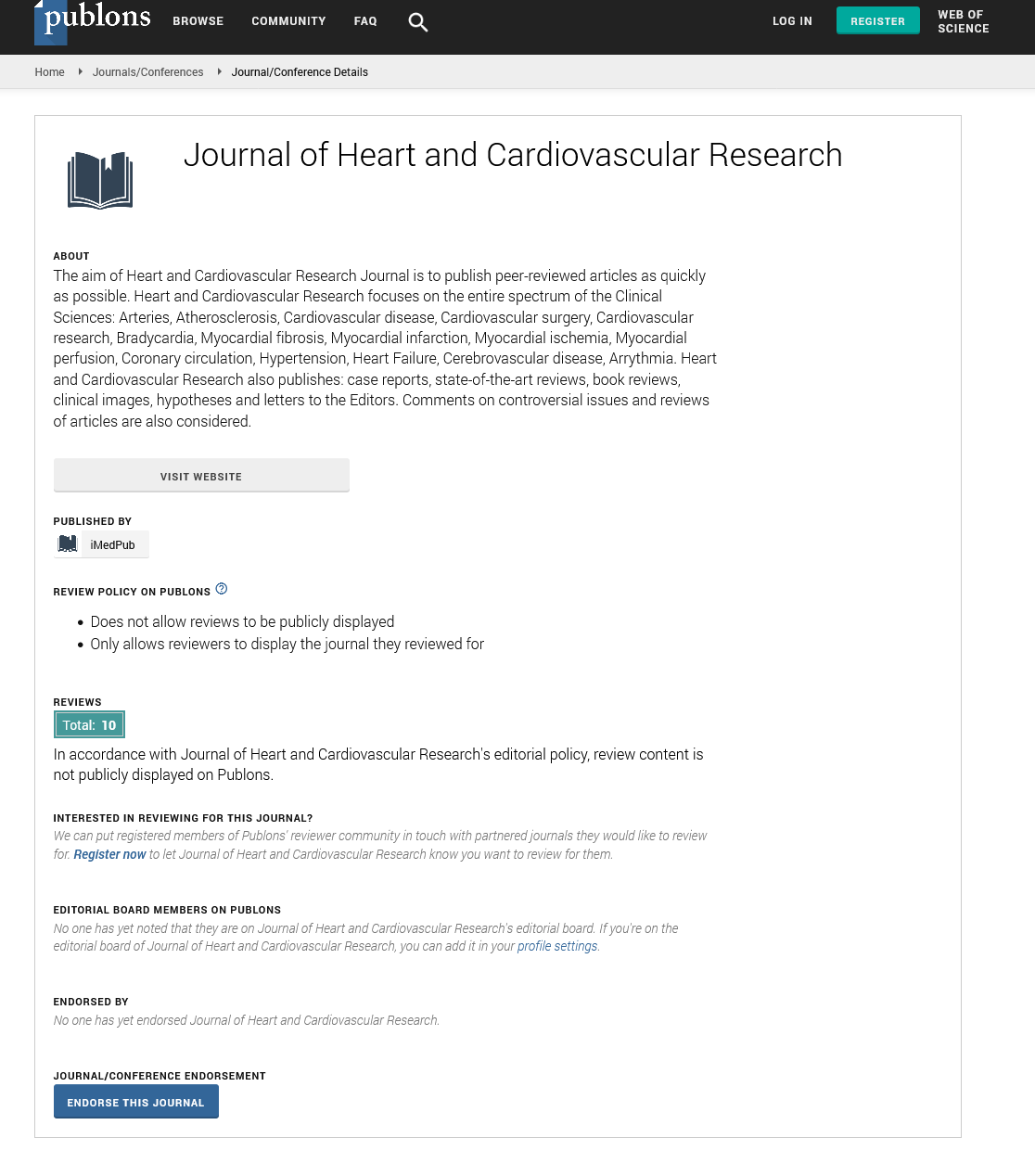ISSN : ISSN: 2576-1455
Journal of Heart and Cardiovascular Research
Abstract
Heart Congress 2020 : Physician adherence to ESC pharmacotherapy guidelines for HeartFailureincentralhospital - Thongxay - SavannaketHospital
Background: Heart failure places a significant burden on the patients and health system worldwide. However information about its burden in Low income country is scant. Witnessing a lack of adherence to heart failure guidelines amongst physicians in our environment prompted this study. The main objective is to determine physician adherence to ESC pharmacotherapy guideline in heart failure in an economically resource poor tertiary health facility.
Method: Review the prescription pattern of Neurohormonal blocker agent of 102 confirmed heart failure with reduce LVEF was carried out. Data from adherence evaluation were obtained from follow up information form outpatient clinic notes, while data on acute care medication and precipitating factors were from inpatient hospitalization notes.
Advances in diagnosis and treatment have improved the outlook for the estimated 26 million patients with heart failure (HF) worldwide, but there remains a continuing need for further reduction in mortality and hospitalisation and the associated social and financial consequences of the disease. In a European study of outcomes after HF hospitalisation, 17 % of patients died within 12 months and 44 % were rehospitalised, and the most recent data from the British National Heart Failure Audit showed in-hospital mortality of 8.9 % and mortality at 1 year of 26.7 % in those surviving to leave hospital. Patients are at greatest risk in the first 30 days after hospitalisation, though there is some evidence that good adherence to HF treatment guidelines may improve clinical outcomes.
Result: Heart failure (HFrEF) patients aged 59.03 ± 15.15 years, had NYHA III/IV symptoms (44.1%) and remain hypertension (21.5%), mean LVEF was 30.60± 7.14. hypertension and diabetes were predominant comorbidity, Etiology of heart failure was ICM (50%), Pharmacotherapy average three drug classes and consisted of ACEI/ARB (86.3%), Beta-blocker (50%), and MRA (32.24%) respectively. The use of Beta blocker and MRA tents to be suboptimal. Combination pharmacotherapy: ACEI/ARB+BB (42.1%), ACEI/ARB+MRA (23.5%), BB+MRA (15.7%), three
classes combination (18.7%). Target dose achievement ACEI (1.5%), beta blocker and MRA were not. the prescribing dosages were lower than the doses recommended by the guideline Most of patients were prescribed starting doses in accordance with the guidelines: ACEI- 5mg/d (62.1%), BB-6,25mg/d (72.5%), MRA-25mg/d (97%). However, the maximum dose in this study was low: ACEI (40 mg/d), Beta blocker (25mg/d), MRA (25mg/d).
Conclusion: As in the other country of the world non adherence to guideline substantial problem in Laos. Our data confirm the need of dedicated heart failure treatment program to optimize heart failure outcome in low resource environment. Our physicians will benefit from a structured heart failure education and feedback program. Better strategies for heart failure surveillance and management in Laos are need.
Author(s): Thongxay
Abstract | PDF
Share This Article
Google Scholar citation report
Citations : 34
Journal of Heart and Cardiovascular Research received 34 citations as per Google Scholar report
Journal of Heart and Cardiovascular Research peer review process verified at publons
Abstracted/Indexed in
- Google Scholar
- Sherpa Romeo
- China National Knowledge Infrastructure (CNKI)
- Publons
Open Access Journals
- Aquaculture & Veterinary Science
- Chemistry & Chemical Sciences
- Clinical Sciences
- Engineering
- General Science
- Genetics & Molecular Biology
- Health Care & Nursing
- Immunology & Microbiology
- Materials Science
- Mathematics & Physics
- Medical Sciences
- Neurology & Psychiatry
- Oncology & Cancer Science
- Pharmaceutical Sciences
